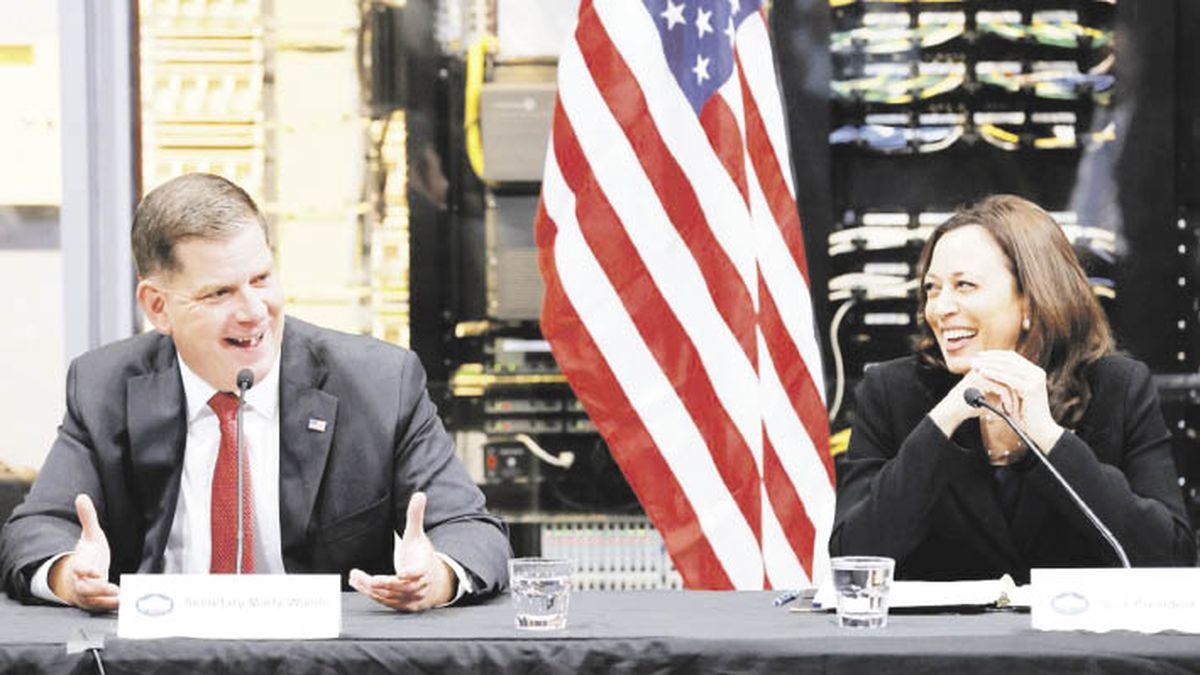“It’s a big problem to find people to finish the job,” explains this owner of the small Twin Fork Beer brewery.
Many companies are currently having trouble recruiting staff in the United States. More than ten million jobs were vacant at the end of August while the activity rate, that is, the share of people who work or seek employment, has gone from 63.3% before the pandemic to 61.6% in September. .
The reasons are various. Some people fear getting the new coronavirus, particularly if they have children or elderly people at home. Others took early retirement during the pandemic. Others, finally, prefer to change the balance between private and professional life or are simply fed up with low wages.
Incentives
The end, last month, of the more generous unemployment benefits launched during the pandemic has not translated into a rush towards job search.
At the same time, with the vaccination campaign, restaurants, tourist spots and shows have reopened and now all dealers are preparing for the holiday season.
“There are a lot of employers trying to recruit at the same time,” says Aaron Sojourner, an economist at the University of Minnesota. “This creates an imbalance.”
To attract candidates, “we seek to pay as much as we can, offer a package of social benefits,” says Chekijian. He puts out ads, does interviews, goes to job fairs, but “it’s awfully slow.” And that “undoubtedly” slows down the growth of the company, he assures.
“War”
For Maryclaire Hammond, head of human resources for the logistics company GXO, which seeks to recruit 9,000 people for the Christmas season in the United States, “there is strong competition at all levels, an absolute war.”
To ensure packages are delivered in time for Christmas, large companies try to recruit temp workers at full throttle: 150,000 at Amazon, 150,000 at Walmart, 100,000 at Target, 100,000 at UPS, 90,000 at Fedex …
GXO, for its part, lacks packers and handlers. To recruit, the company uses personalized online and social media advertising, billboards, and job fairs. In some regions, it has increased its minimum wage from $ 3 to $ 5 in the last eight days, offers hiring bonuses as well as a set of benefits such as health insurance, contributions to the pension system and university expenses.
Above all, however, you have to encourage people to stay, says Hammond. “The current workforce is quite volatile. If the neighboring warehouse offers an additional dollar per hour, people will change, ”he explains.
The company tries to create a good atmosphere in the warehouse. “It may seem silly, but proposing good burritos in the morning motivates people,” says the person in charge.
To cope, GXO has also increased the automation of tasks in its warehouses by 40% in the last year. “For packaging operators who must walk up to 10 miles a day in the warehouse, a robot can help them find products more easily,” explains Hammond.
Tailwind
Looking for a full-time clerical job, Staci Weinsheimer, 44, feels the wind blowing in her favor.
“I have a lot of interviews, a lot of positive responses from employers,” he explains after finding several companies at a job fair attended by 27 hospitality and restaurant companies in Melville, New York State. “There are a lot of different positions available that maybe weren’t open five or six years ago,” he says.
Some unemployed still have trouble getting an interview or doubt the actual willingness of companies to make efforts.
“Employers could spend more money to attract candidates and improve working conditions. Those who do find it easier, ”says Aaron Sojourner.
“But many employers are reluctant to raise wages because it reduces their benefits and forces them to raise everyone,” he says. Some prefer to pay more for overtime.
AFP Agency
David William is a talented author who has made a name for himself in the world of writing. He is a professional author who writes on a wide range of topics, from general interest to opinion news. David is currently working as a writer at 24 hours worlds where he brings his unique perspective and in-depth research to his articles, making them both informative and engaging.




